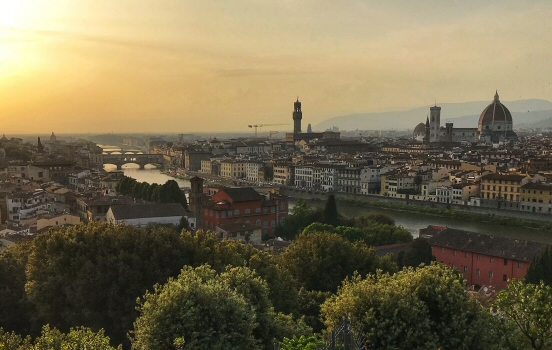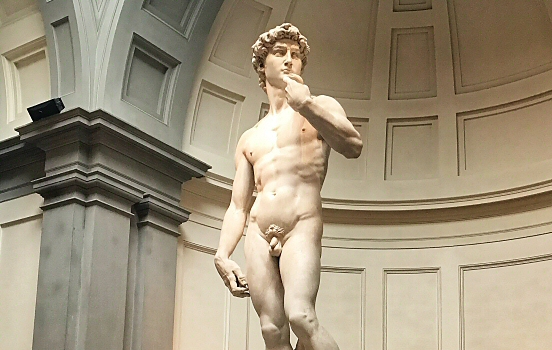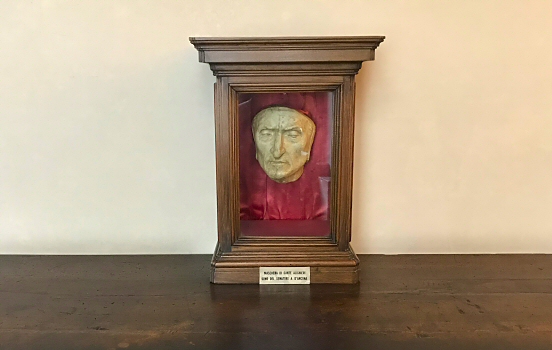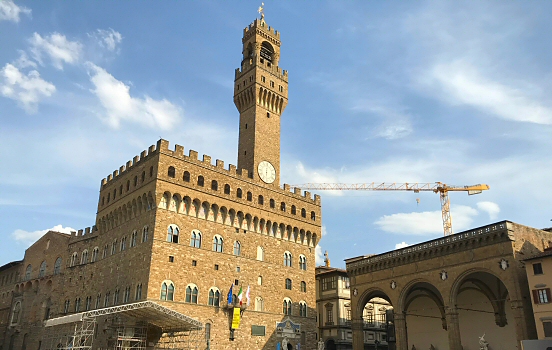Some cities keep their best cards close to the chest, being careful not to spill any secrets to visitors. Florence is the complete opposite. This city flaunts its goods like a dancer at the Moulin Rouge.
Florence is an open-air museum, held together by a thin thread of modernity. But espresso machines and gelato can’t quite mask the fact that every stone here is saturated with centuries of genius, betrayal and divine inspiration.
From the imposing Palazzo Vecchio to the impeccable Duomo, from the statue of David to the masterpieces of Botticelli. The works of past masters are ever present in the city of Galileo, Dante and Michelangelo. In the movie “A Room with a View” from 1985, Helena Bonham-Carter gazes from her window at Hotel degli Orafi towards Ponte Vecchio. But I would say that this is A City with a View, since almost every corner could belong on a painting.
 Sunset over Florence from Piazzale Michelangelo.
Sunset over Florence from Piazzale Michelangelo.
As I stand in front of the statue of David by Michelangelo, arguably one of the most famous sculptures in the world, I wonder if there really is such as thing as perfection. Was any human able to create anything to top this? Galleria dell’Accademia is full of wonderful art, but David really stands out.
 David by Michelangelo.
David by Michelangelo.
One of the most famous names from Florence is Dante Alighieri, best known for The Divine Comedy. Parts of his legacy can be seen all over the city. Inside Palazzo Vecchio I find his death mask, which regained popularity after the movie “Inferno”. The so called Casa di Dante is not his actual house, but a reconstruction in the area where he lived. It’s located next door to the Santa Margherita de’ Cerchi church, allegedly the place where he first met Beatrice, as well as the location of her tomb.
Just a few blocks to the north, there is a small alley next to the Duomo. Dante wrote that he used to sit on a stone here in 1291 and think of her, as she had passed away the year before. Today a symbolic stone has been placed on the spot, together with an inscription.
 Dante’s death mask in Palazzo Vecchio.
Dante’s death mask in Palazzo Vecchio.
I sit down outside Palazzo Vecchio to rest my weary feet, surrounded by statues and sculptures at the Loggia dei Lanzi. The statue of Perseus is looking down at me with disdain, busy holding the Head of Medusa as his loot.
 The imposing Palazzo Vecchio next to Loggia dei Lanzi.
The imposing Palazzo Vecchio next to Loggia dei Lanzi.
I cross the medieval stone bridge Ponte Vecchio spanning the river Arno, looking down at the murky water and remembering Mark Twain’s description from 1867:
“It is popular to admire the Arno. It is a great historical creek with four feet in the channel and some scows floating around. It would be a very plausible river if they would pump some water into it. They all call it a river, and they honestly think it is a river, do these dark and bloody Florentines. They even help out the delusion by building bridges over it. I do not see why they are too good to wade.”
— Mark Twain (1867)
I wander down narrow streets south of the river, trying to fully take in my surroundings with regards to sights, smells, sounds and taste. Oh yes, taste! The food and wine of Tuscany is second to none. I am always amazed how Italians can work magic with a few top-quality ingredients. “I ate his liver with some fava beans and a nice Chianti”, as old Hannibal Lecter once put it.
As the sun dips behind terracotta rooftops and the streets begin to exhale the day’s heat, you might feel it too. That flicker of awe, that brush with the eternal. Florence is the still-beating heart from a time when the world remembered how to dream big.

Comments
No comments yet.
Leave a reply